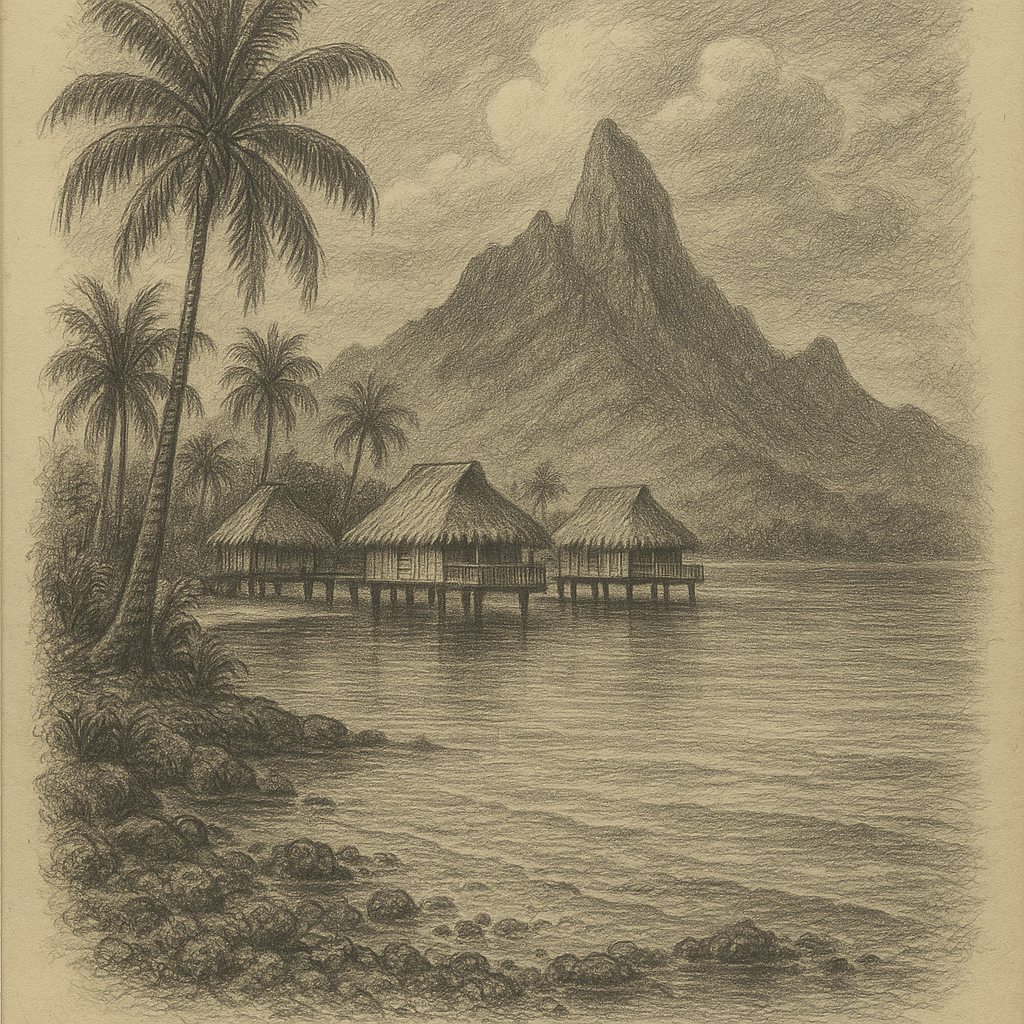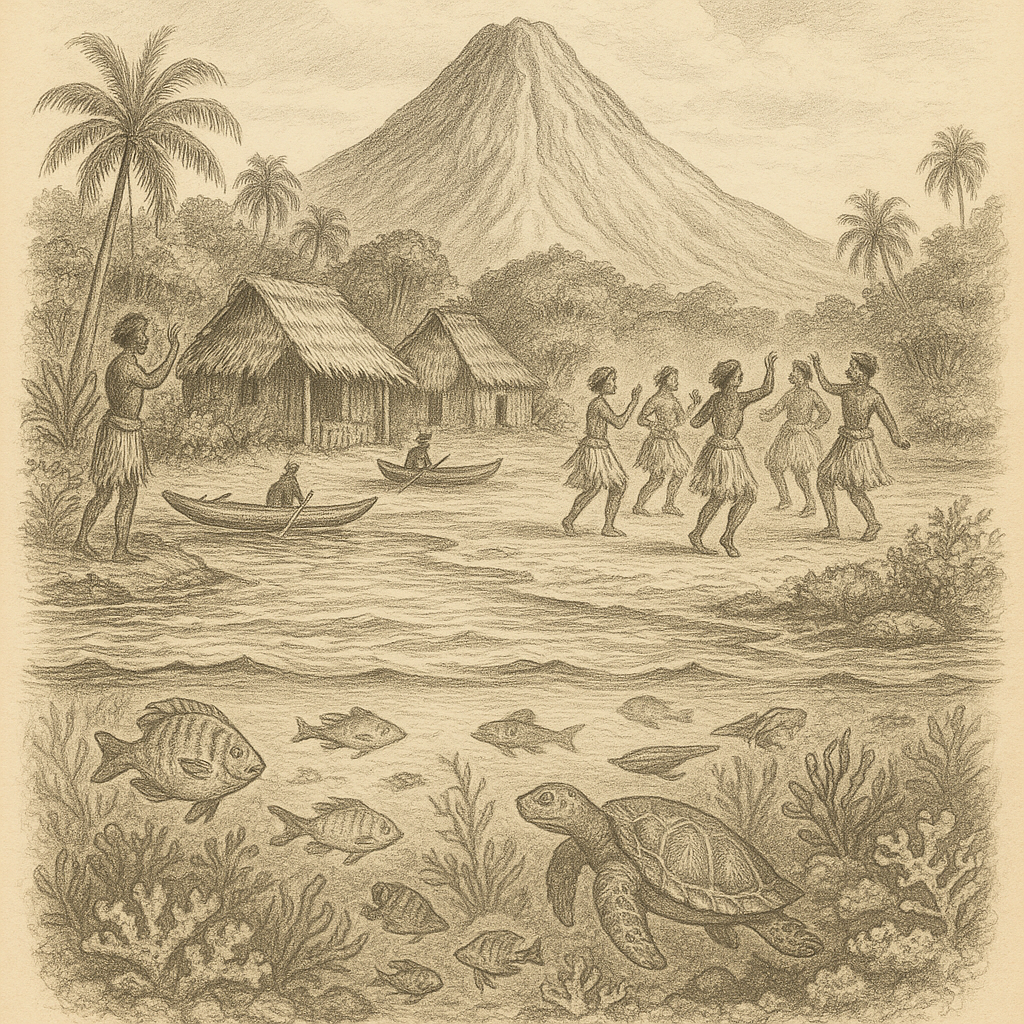Motu Tevairoa is a picturesque island located in the turquoise lagoons of Bora Bora, part of the Society Islands in French Polynesia. The island, while not as globally known as some of its larger neighbours, is a haven of natural beauty, cultural depth, and serene isolation.
Nestled just to the northwest of Bora Bora’s main island, Motu Tevairoa is primarily known for its peaceful environment, white sand beaches, and luxury resort accommodations. Its proximity to the main island makes it accessible, yet its small size and privacy offer a genuine secluded experience.
Geographical Features
Motu Tevairoa covers a modest area, making it one of the smaller motus (islets) that encircle the main island of Bora Bora. It lies along the outer coral reef barrier that forms the famous lagoon, offering panoramic views of Mount Otemanu and lush tropical surroundings.
The island is a flat coral atoll, typical of many islands in the region, with abundant coconut palms and well-preserved vegetation. Its location, just a short boat ride from Vaitape, Bora Bora’s main village, makes it both accessible and remote — ideal for travelers in search of quietude amidst nature.
Climate and Natural Environment
The island enjoys a tropical climate, with warm temperatures and high humidity year-round. Rainfall is frequent during the wet season, which typically spans from November to April, while the dry season — from May to October — brings sunshine and steady trade winds.
These conditions have fostered a rich environment for marine biodiversity. The lagoon surrounding Motu Tevairoa is a sanctuary for coral reefs, rays, reef sharks, tropical fish, and sea turtles. Snorkeling and diving in these waters reveal a vibrant underwater world that thrives just meters from the shoreline.
Flora and Fauna
The vegetation on Motu Tevairoa is dominated by coconut trees, pandanus, hibiscus, and other tropical flora, typical of low-lying atoll environments. Birdlife includes several seabird species that either reside on the motu or use it as a resting spot during migrations.
While not known for a vast terrestrial wildlife presence, the island is alive with the sounds of lapping water, breeze-filled palms, and the occasional call of seabirds. Under the sea, however, life abounds — coral gardens extend around the motu, supporting numerous fish and invertebrate species vital to the marine ecosystem.
Human Presence and Tourism
Although uninhabited permanently, Motu Tevairoa hosts one of Bora Bora’s luxury resorts — the Pearl Beach Resort & Spa. The resort integrates traditional Polynesian architectural elements with modern comforts and offers iconic overwater bungalows as well as beachfront and garden villas.
Tourism is the island’s primary human activity, focused on eco-friendly and sustainable practices. The small-scale development ensures that the natural beauty and tranquility remain the island’s defining characteristics.
Beyond the resort, the island lacks urban infrastructure, contributing to its untouched appeal. Guests arrive by boat, and there are no roads, cars, or commercial centers — the experience is entirely geared toward harmony with nature and relaxation.
Staff members not only serve hospitality roles but often act as cultural ambassadors, introducing guests to Polynesian traditions and customs. This cultural exchange enriches the visitor experience and preserves local heritage.
Points of Interest and Fun Facts
The resort on Motu Tevairoa features a traditional Polynesian wedding chapel, often used for destination weddings with the dramatic backdrop of Mount Otemanu. Couples from around the world choose this location for its breathtaking scenery and romantic atmosphere.
Despite its small size, the motu’s location offers one of the most stunning viewpoints for Bora Bora’s legendary sunsets, often accompanied by traditional Polynesian music and dance performances. These cultural shows provide insight into the rich heritage of French Polynesia.
Motu Tevairoa is frequently featured in travel photography and adorns numerous postcards and travel brochures, thanks to its idyllic setting and pristine waters. The coral reefs near the motu are part of Bora Bora’s protected lagoon ecosystem, and guests are encouraged to participate in reef-safe snorkeling practices.
The resort restaurant uses locally grown ingredients, including breadfruit, taro, and tropical fruits harvested from the motu itself or nearby islands. This farm-to-table approach supports local agriculture and reduces environmental impact.
Local Myths and Legends
Like many islands throughout French Polynesia, Motu Tevairoa has its share of tale and myth, woven into the fabric of Polynesian oral tradition. While not as densely storied as the larger islands, one local legend talks of a spirit guardian — a matriarchal figure named Hina Tevairoa — who is said to live within the central coconut grove of the motu.
According to legend, Hina Tevairoa watches over the island’s visitors, protecting them from storms and ensuring calm waters so long as the grove remains respected and untouched. It is said that locals once left offerings of shell necklaces and coconut milk at the base of a particularly tall coconut tree near the island’s northern tip.
Fishermen who did so reportedly enjoyed safe journeys and bountiful catches. While such practices are no longer common, some visitors and resort hosts continue the tradition in symbolic ways, leaving coral stones or flower garlands as tokens of gratitude to the island spirit.
Conservation and Environmental Efforts
As one of Bora Bora’s smaller motus with tourism-oriented infrastructure, great care has been taken to balance development with ecological preservation. Freshwater resources are limited and managed carefully through rainwater collection and desalination systems.
The resort operates under sustainability policies that include waste reduction, composting, and coral reef monitoring. Guests are also educated on how to reduce their environmental footprint during their stay.
This includes avoiding the use of harmful sunscreens, participating in beach cleanups, and respecting wildlife habitats. With sea levels slowly rising in the Pacific, Motu Tevairoa, like many other low-lying motus, faces an uncertain future, making conservation efforts more critical than ever.
Final Thoughts
Motu Tevairoa offers a secluded slice of paradise rich in natural beauty, cultural tradition, and environmental significance. A peaceful refuge away from the world’s hustle, this island exemplifies the delicate balance between preserving nature and embracing mindful tourism.
From its sparkling blue waters and lush foliage to its enduring legends and community-driven hospitality, Motu Tevairoa invites every visitor to pause, breathe, and connect — not only with the island itself but with a deeper sense of tranquility that few places in the world can still offer.



